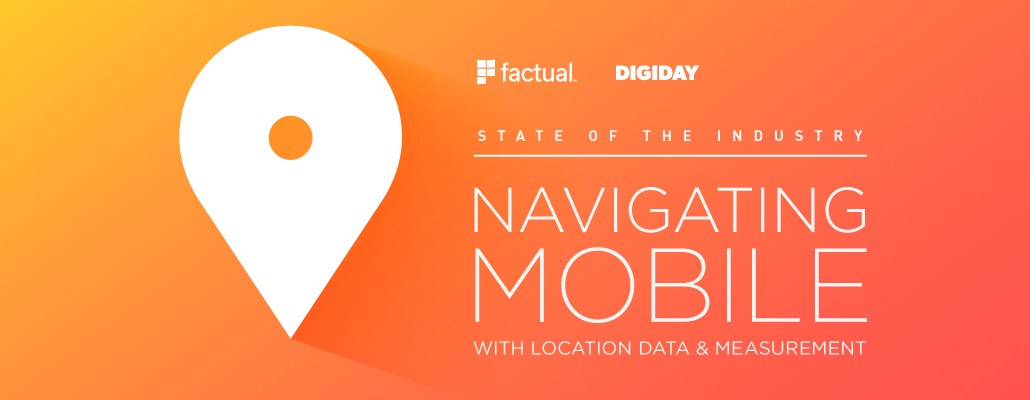
For consumers everywhere, mobile is taking precedence over desktop. To publishers, this means moving beyond the basics to identify all the new audience data points that can now provide added value to their advertisers.
We asked 369 publishers to see how they’ve adapted to mobile-first strategies and how they’re using location-based data to collect meaningful insights on customers.
To get the full results, download our latest State of the Industry report, “Navigating mobile with location data and measurement,” in partnership with Factual.
What we found: Resources are moving to mobile but the data isn’t currently being used optimally.
Mobile targeting is the new priority

There’s no question that resources are moving from desktop to mobile. On average, publishers target 63 percent of their users on mobile apps, followed by targeting users on their desktop (19 percent) and mobile web (18 percent).
However, publishers aren’t focused enough on conversions

Currently, only 9 percent of publishers are turning to conversions as their main measurement tactic when gauging the success of ads run on their platform, leaving ample room for opportunity to get ahead.
Publishers aren’t scaling their data resources

Eighty-five percent of publishers are currently purchasing third-party mobile data, which includes data owned by other companies on customer behaviors and actions. However, most (61 percent) are only working with one partner, meaning that their view of their audience based on their data profile is still limited.
Publishers are tapping into location-based data
Most publishers (76 percent) already use the data gained through any customer leads they acquire to provide some form of geotargeting, reaching users who live or move through certain areas.

Without a focus on scaling the right metrics, publishers may never reach the audience their advertisers have in mind. The ones who will be the most successful will be able to hone in on the customer insights that matter most while targeting on unfamiliar mobile ground.
For the full results, download the SOTI report to learn:
- Which metrics publishers are overemphasizing
- Why location-based targeting is becoming a standard of measurement
- What publishers are prioritizing when it comes to working with data partners
More from Digiday

Media buyers shift spend from The Trade Desk’s OpenPath over transparency concerns
OpenPath offers buyers a “cleaner” route to publishers, but some are concerned about lack of clarity over indirect costs.

How the MAHA movement influenced food and beverage brands in 2025
The MAHA movement has come to stand for different things in different people’s eyes, depending on which initiatives they most closely follow.

Why Georgia-Pacific is turning its programmatic scrutinty to the sell side
The company is turning its attention to the sell side, zeroing in on the ad tech firms that move inventory for publishers — the supply-side platforms.





